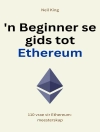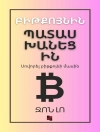Inventory management is concerned with matching supply with demand and a central problem in Operations Management. The problem is to find the amount to be produced or purchased in order to maximize the total expected profit or minimize the total expected cost. Over the past two decades, several variations of the formula appeared, mostly in trade journals written by and for inventory managers. A critical assumption in the inventory literature is that the demands in different periods are independent and identically distributed. However, in real life, demands may depend on environmental considerations or the events in the world such as the weather, the state of economy, etc. Moreover, these events are represented by stochastic processes – exogenous or controlled.
In Markovian Demand Inventory Models, the authors are concerned with inventory models where these world events are modeled by Markov processes. Their research on Markovian demand inventory models was carried out over a period of ten years beginning in the early nineties.
Table of Content
I INTRODUCTION.- II DISCOUNTED COST MODELS.- Discounted Cost Models with Backorders.- Discount Cost Models with Polynomially Growing Surplus Cost.- Discounted Cost Models with Lost Sales.- III AVERAGE COST MODELS.- Average Cost Models with Backorders.- Average Cost Models with Polynomially Growing Surplus Cost.- Average Cost Models with Lost Sales.- IV MISCELLANEOUS.- Models with Demand Influenced by Promotion.- Vanishing Discount Approach Versus Stationary Distribution Approach.- V CONCLUSIONS AND OPEN RESEARCH PROBLEMS.- Conclusions and Open Research Problems.












